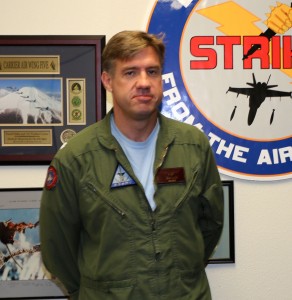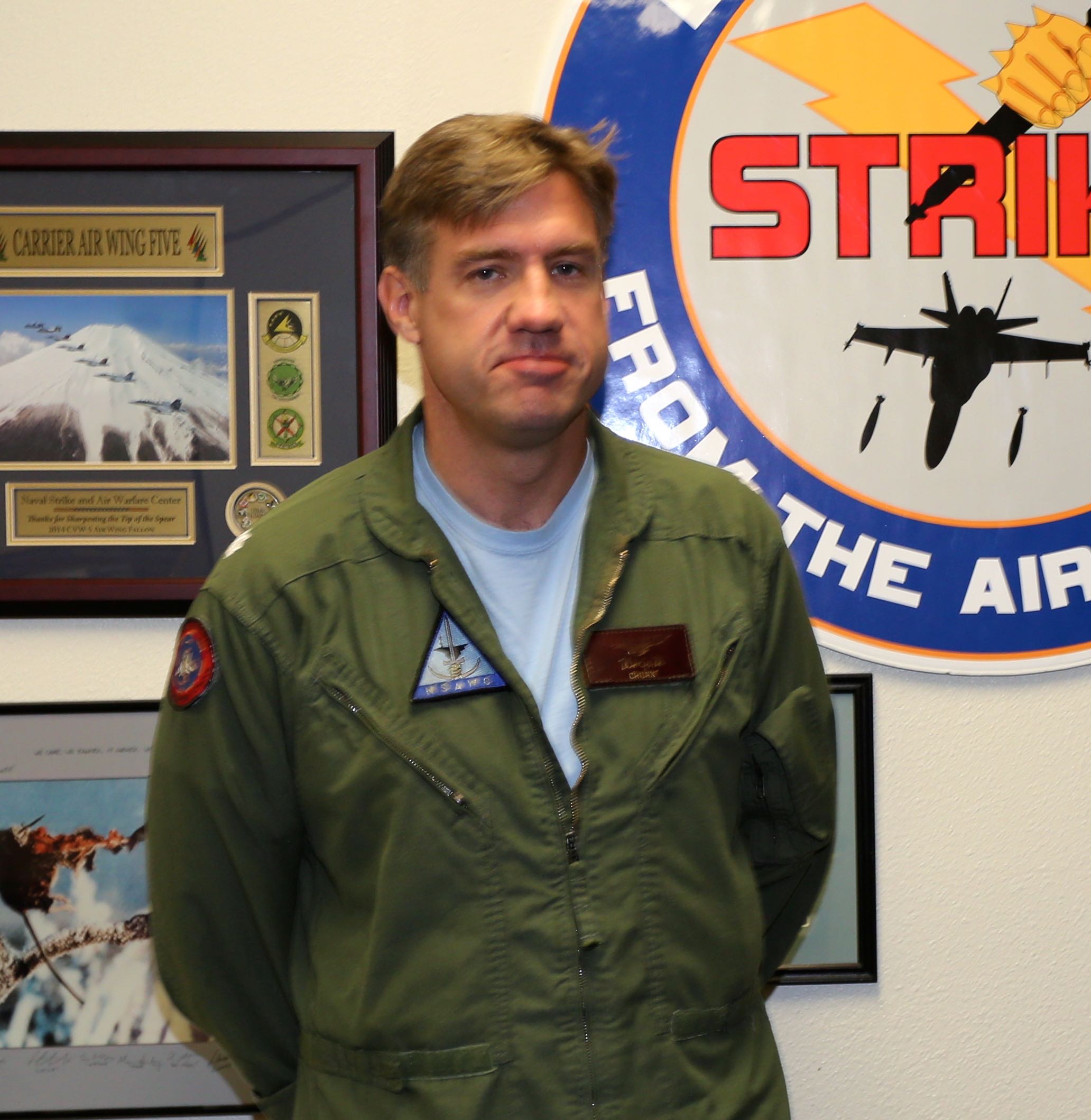2014-11-09 By Robbin Laird and Ed Timperlake
During our visit to the Naval Strike and Air Warfare Center in October 2014, we had a chance to discuss the importance of training and the way ahead with CDR Charles “Chunks” Smith.
Question; You are currently at Top Gun but what is your background in Naval Aviation?
CDR Smith:
My background is primarily as a weapons school instructor, which I have done for about half of my career.
I have had two tours at Top Gun and most recently as an exchange officer with Nellis in the F-16 division of the Air Force Weapons School.
I was at Nellis for two and half years and have come back to Top Gun and can bring back that experience to the Top Gun program.
Question: We have discussed with other members of NSAWC the role of virtual training in preparing to operate in the extended battlespace. What is your perspective on this trend?

CDR Smith:
There are two important aspects.
One is cost, where virtual training is designed to drive down the cost of actual flight hours.
But it is important to remember how important flight hours really are to basic proficiencies.
The second is as you say about shaping capability to operate in the battlespace.
If you want to train to concepts like Aegis is my wingman, you are going to do that in a virtual training space.
I can take that pilot in the cockpit and broaden the threats and extend his capability to draw upon blue assets through virtual training.
Question: How would you contrast Top Gun with Nellis?
CDR Smith:
At Top Gun we fly the F-18 so our focus is on proficiency in flying that aircraft.
At Nellis you have a variety of airplanes and the focus is first of all on proficiencies and advanced tactics for that airplane and then with the integration of those aircraft across the air wing.
A key part of Nellis training is clearly upon airpower integration.
Our focus after Top Gun within NSAWC is upon integration of the carrier strike group, which is our functional equivalent of Nellis doing its integration processes.
Question: How do you view the role of training –notably advanced weapons shool training – in terms of preparing for combat?
CDR Smith:
We are demanding significant effectiveness and complexity out of our carrier air wings in today’s environment.
But I cannot run a Peyton Manning style offense if I don’t know how to block and operate downfield effectively.
I have to train those basic competencies to then operate effectively in a complex system.
That is what we do in the advanced weapons schools.
You need to ensure that the basic air service mechanics are solid; otherwise integration is really ineffective.
I would argue that training is the essential piece, which is necessary to drive combat competence and the ability to get full value out of our platforms.
I’m not a famous admiral in the Pacific, but if you want the Chunk sound bite, I’ll tell you that it is a waste of taxpayer money if you buy a capability that has not been trained to by its aircrew, it’s a waste of tax payers money.
Question: As a new platform, like the F-35, is introduced into the fleet and then the TTPs shaped for the aircraft and then integrated into the air wing, what are the challenges?
CDR Smith:
A key challenge can be to simply apply the older thinking to the newer platform.
The danger, in my own opinion, is the fleet developing TTPs for a new platform based on the tactics for which they’re familiar from their own legacy platform.
For example, the USAF flew the F-22 as if was an F-15; when they finally shifted the tactics to the new platform’s capabilities, change really took hold.
Question: We have lived through this before when the air to air and air to ground communities in the Navy were confronted with the challenge of coalescing their two cultures into the F-18.
The F-4 and A7 communities are now confronted with the need to blend their culture.
And that kind of transition will occur as the F-35 enters the fleet.
CDR Smith:
That makes sense and we can draw upon historical analogies in other ways as well.
For example, for me the F-35 SEAD mission is quite similar to how the Wild Weasels used their F-16s.
There are distinct parallels to the F-16 SEAD mission.
And the way I would look forward to F-35s working with Growlers is that the two aircraft have different missions and provided a combined arms type of approach to dealing with spectrum warfare.


